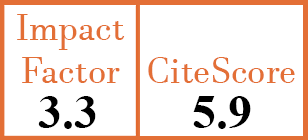Full Papers
Cardiac magnetic resonance imaging reveals frequent myocardial involvement and dysfunction in active rheumatoid arthritis
M. Holmström1, R. Koivuniemi2, K. Korpi3, T. Kaasalainen4, M. Laine5, A. Kuuliala6, M. Leirisalo-Repo7, M. Kupari8, S. Kivistö9
- HUS Medical Imaging Center, Radiology, University of Helsinki and Helsinki University Hospital, Helsinki, Finland. miia.holmstrom@hus.fi
- Department of Rheumatology, University of Helsinki and Helsinki University Hospital, Helsinki, Finland.
- Heart and Lung Center, University of Helsinki and Helsinki University Hospital, Helsinki, Finland.
- HUS Medical Imaging Center, Clinical Physiology and Nuclear Medicine, University of Helsinki and Helsinki University Hospital, Helsinki, Finland.
- Heart and Lung Center, University of Helsinki and Helsinki University Hospital, Helsinki, Finland.
- Department of Bacteriology and Immunology, University of Helsinki and Helsinki University Hospital, Helsinki, Finland.
- Department of Rheumatology, University of Helsinki and Helsinki University Hospital, Helsinki, Finland.
- Heart and Lung Center, University of Helsinki and Helsinki University Hospital, Helsinki, Finland.
- HUS Medical Imaging Center, Radiology, University of Helsinki and Helsinki University Hospital, Helsinki, Finland.
CER8784
2016 Vol.34, N°3
PI 0416, PF 0423
Full Papers
Free to view
(click on article PDF icon to read the article)
PMID: 27050802 [PubMed]
Received: 15/07/2015
Accepted : 12/10/2015
In Press: 06/04/2016
Published: 30/05/2016
Abstract
OBJECTIVES:
In rheumatoid arthritis (RA), cardiac involvement is common and often subclinical. We used cardiovascular magnetic resonance (CMR) to identify myocardial abnormalities in patients with active RA, free of clinical cardiac disease.
METHODS:
Sixty female patients with active RA aged <70 years and 21 sex- and age-matched control subjects underwent either 1.5T or 3T CMR imaging for analyses of T1 relaxation times, late gadolinium enhancement (LGE), and the volumes, and function of both ventricles.
RESULTS:
Determined using 1.5T CMR, the native left ventricular (LV) septal T1 time averaged 1011 (range 973-1046) ms in 20 patients with RA vs. 976 (range 970-988) ms in 10 control subjects (p=0.045). With 3T CMR, the T1 time measured 1173 (range 1154-1187) ms in 29 RA patients vs. 1053 (range 942-1148) ms in 9 control subjects (p=0.002). Myocardial LGE was detected in 55% of the RA patients. LV ejection fraction averaged 58 (range 56-61)% vs. 66 (61–74)% (p<0.001) in the RA (n=60) and control groups (n=21), respectively, and corresponding means for LV peak filling rate were 2.99 (range 2.32-3.33) s-1 vs. 3.39 (range 2.96-3.70) s-1 (p=0.012). The end-diastolic volumes of either ventricle were enlarged in RA compared to the control group (p<0.05 for both).
CONCLUSIONS:
In active RA, myocardial T1 relaxation times are prolonged suggesting diffuse inflammation or fibrosis. Local myocardial scars and inflammation, visible as LGE, are also common, as are impairments of LV systo-diastolic function.


